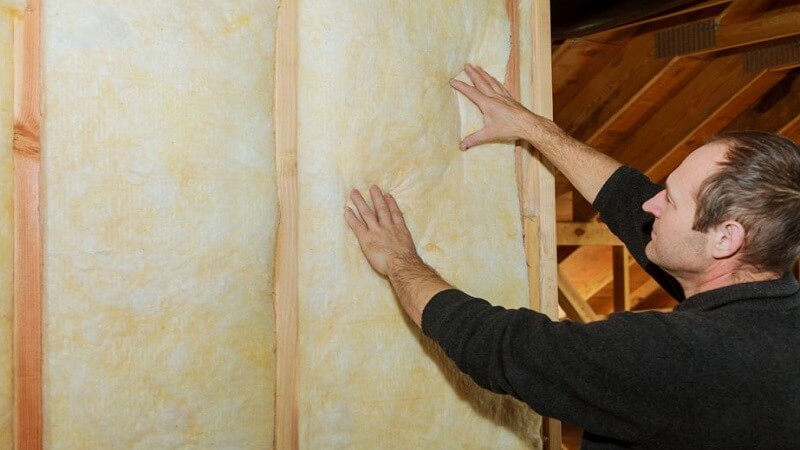Attic condensation is a common winter issue that can lead to mold, wet insulation, and structural damage. It happens when warm, moist air escapes into a cold attic space and condenses on the roof sheathing and other cold surfaces. Fixing attic condensation involves sealing air leaks, improving attic insulation, and ensuring proper attic ventilation to regulate temperature and airflow.
Table of Contents
- What Is Attic Condensation and Why It Happens
- How to Tell If You Have Attic Condensation Problems
- Main Causes of Attic Condensation in Calgary Homes
- Step-by-Step Guide to Fix Attic Condensation
- How to Prevent Attic Condensation Long-Term
What Is Attic Condensation and Why It Happens
Attic condensation occurs when warm, moist air from your home rises into the attic and hits a cold surface like the underside of the roof sheathing. As the warm air cools rapidly, moisture turns into water droplets, just like steam condensing on a bathroom mirror. In winter, this can result in frost buildup, which melts during warmer spells, causing what many homeowners mistake for a roof leak.
Calgary homes are especially vulnerable due to cold winters, temperature fluctuations, and inconsistent building standards across decades. When condensation occurs regularly, it signals attic insulation, ventilation, or air leakage issues.
How to Tell If You Have Attic Condensation Problems
Spotting the signs early can help you avoid major repair bills. Watch for:
- Frost buildup on the roof sheathing
- Drips from attic ceilings after a cold spell
- Water stains near the roof vents or the attic hatch
- Moldy or wet insulation is damp to the touch
- A musty smell in the attic space
- Sagging or stained ceiling drywall
Main Causes of Attic Condensation in Calgary Homes
Poor Attic Insulation
When insulation is thin, compressed, or uneven, warm air rises into the attic space instead of staying in your living areas. This warms up the attic slightly, just enough for frost to form and then melt on contact with cold surfaces.
Air Leakage from Below
Warm, moist air from bathrooms, kitchens, or laundry rooms often escapes into the attic through gaps in the ceiling. These leaks can be around pot lights, attic hatches, wiring holes, or exhaust fan ducts.
Inadequate Attic Ventilation
Without proper attic ventilation, humid air builds up. There’s nowhere for the moisture to escape, so it condenses on the cold roof deck. Balanced ventilation — with intake (soffits) and exhaust (roof vents) — helps maintain air circulation.
Step-by-Step Guide to Fix Attic Condensation
1. Seal All Air Leaks First
Use caulk or spray foam to reduce air leakage around all ceiling penetrations. Focus on areas around plumbing stacks, light fixtures, chimneys, and attic access hatches. Sealing air leaks prevents warm air from reaching the attic.
2. Upgrade Attic Insulation
Ensure your attic insulation meets the recommended R-value for Calgary’s climate. Consider topping up with blown-in cellulose or fiberglass. If insulation is wet, replace it immediately.
3. Improve Attic Ventilation
Install or upgrade roof vents and ensure soffit vents are clear of insulation. The goal is to provide steady airflow across the attic space, drawing in cool air at the eaves and pushing out moist air through the roof vents.
4. Fix or Prevent Roof Leaks
Not all water in the attic is condensation. Check for roof leaks, especially around flashing, chimneys, and valleys. Water from outside can compound attic condensation problems.
5. Install Baffles and Vent Chutes
Vent chutes or baffles help keep air flowing through soffit vents and prevent insulation from blocking airflow. They’re essential in maintaining proper attic ventilation, especially in tight spaces.
6. Use Vapor Barriers Where Needed
In some older homes, installing a vapor barrier on the warm side of your insulation can help reduce moisture from entering the attic space. This works best in conjunction with other strategies like air sealing and ventilation.
7. Install a Bathroom or Kitchen Exhaust Fan Timer
Many attic condensation issues are caused by prolonged humidity from showers and cooking. A timer or humidistat-controlled fan ensures these spaces are correctly ventilated even after you leave the room.
8. Control Indoor Humidity Levels
Use a hygrometer to monitor indoor humidity. In winter, keep it between 30% and 40%. If it’s above that, run dehumidifiers or check HVAC settings. Less indoor humidity means less attic condensation.
9. Check for Cold Roof Deck and Cold Surfaces
Using an infrared camera or during an inspection, check if parts of your roof sheathing remain colder than others. This could indicate insufficient insulation or blocked airflow, both of which lead to condensation buildup.
10. Remove Frost and Dry Out Wet Insulation
If attic frost has already built up, remove it carefully with heat or ventilation. Replace any wet or compacted insulation. Damp insulation loses its effectiveness and contributes to more condensation.
11. Inspect After a Cold Snap
After a sharp drop and rise in temperature — typical in Calgary winters — inspect the attic for any signs of water drips, frost, or mold. This is when attic condensation problems are most obvious.
If you’ve tried fixes but condensation persists, call a local expert. A qualified insulation contractor or roofing company can assess roof ventilation, insulation levels, and hidden air leakage areas. They can also share their expertise about high-quality roofing materials.
How to Prevent Attic Condensation Long-Term
Maintain Proper Ventilation Year-Round
Good attic ventilation isn’t just a winter concern. Keep air moving even in warmer months to prevent mold growth and stale air buildup.
Schedule Annual Attic Inspections: Make attic checks part of your annual home maintenance routine. A quick look in early winter and after major cold snaps can catch condensation early.
Upgrade Insulation When Renovating: Whenever you renovate or re-roof, use the opportunity to improve attic insulation and install roof baffles or vapor barriers. It’s the best time to access and upgrade those hard-to-reach spaces.
Educate the Household: Help everyone in your home understand how everyday actions impact attic moisture — long showers, blocked vents, or skipping fan use can all contribute to attic condensation.
Stay Ahead of Attic Condensation Problems
Fixing attic condensation isn’t just about patching damage — it’s about preventing it from happening again. By sealing air leaks, improving attic insulation, and ensuring proper attic ventilation, Calgary homeowners can protect their attic space from costly, long-term moisture issues.
The sooner you address the root causes of condensation, the easier it is to avoid mold, rot, and structural damage. A dry attic is a healthy attic — a significant step toward a safer, energy-efficient home.

